Tilapias are economically important food fish for Filipinos. Also, among the easiest and most profitable fish to farm. Tilapias are hardy and tolerant to a wide range of environmental factors making them easy to culture. If you have a hectare of land, a portion of it can be converted to a fishpond where you can raise your organic tilapia.
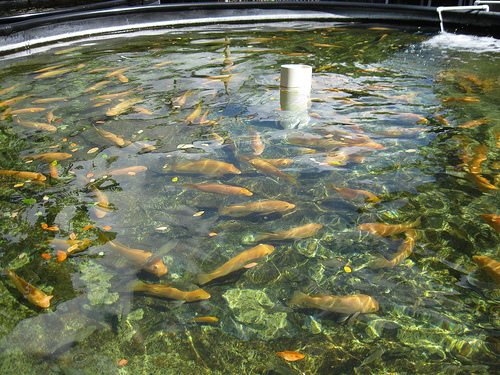
Here are some tips from the Davao-based Mindanao Baptist Rural Life Center (MBRLC) Foundation, Inc.:
Site selection
Select a site where water is accessible throughout the year. It should be well exposed to sunlight, which hastens the growth and multiplication of small aquatic plants called algae (“lumot”), which serve as food for the tilapia. More important, it should not be flooded during rainy season.
Pond preparation
The size of the pond should be determined by the number of fish you want to raise. A good guide is 2-3 mature fish per square meter of water surface. The depth of the pond should be one meter with water not less than three-fourths meter deep. Manage the water so that it will not flow continuously through the pond.
To insure that no fish will escape, fine-meshed bamboo or fence should screen ponds that have waterways connecting them to canals or outside water. Both the inside and outside end of each waterway should be screened. Use big bamboos for inlets and outlets for small ponds.
Pond fertilization
Since the pond is newly constructed, you have to apply fertilizer. Do this one week before stocking. Apply chicken manure on the pond bottom with water depth of about 6 centimeters at the rate of one kilo for every 10 square meters.
Fertilize the pond once a month to insure good production of algae. You can either use commercial fertilizer or organic matter like manure, compost, ipil-ipil leaves, etc. If you do not have organic matter, apply every month one-half kilo of urea and one half kilo of 15-15-15 for even, 100 square meters of water surface.
Securing fish fingerlings
Obtain your first supply of young tilapia from any reliable fishpond owner. One source of tilapia fingerlings is the Mindanao Baptist Rural Life Center (MBRLC) Foundation, Inc, in Kinuskusan, Bansalan, Davao del Sur. If fingerlings are unavailable, you need about 20-30 pairs of good breeders to start reproducing in your tilapia pond of 10 x 20 feet. If fingerlings are available, you will need to plan on about 5 to 6 fingerlings per square meter of water surface area. The most common breeds of tilapia available are: Nilotica, Mozambique, and GIF (genetically modified).
Stocking the pond
Before stocking the pond with tilapia, be sure to drain it thoroughly and remove the weeds and unwanted fish that may be present. Allow your pond to dry up until it cracks before refilling with fresh, clean water. Fertilize the pond one week before stocking.
Stock the pond either early in the morning or late in the afternoon when the water temperature is low in order to avoid weakening of the fish. Allow the water in the pond to mix gradually with the water in the fish container before putting the fish into the pond.
Care and maintenance
– Feed daily during morning and afternoon at one portion of the pond. Supplement feeds with fine rice bran, bread crumbs, earthworms, termites, and others at an initial rate of 5% of the total body weight of the fish.
– Maintain the natural fish-food by adding more fertilizer. Place chicken droppings in sacks and suspend in the water at every corner of the pond. Put 2.5 kg of chicken manure per bag.
– Maintain a water level depth of 1-1.5 meters. Gradually remove excess fingerlings after the third month of stocking. Retain six fingerlings per square meter. (As another source of income, you can sell those excess fingerlings to other farmers in the area.)
– Plant “kangkong” and “gabi” at one portion to provide shade for the fish during hot weather and to serve as growing media for natural fish food. Water lily also provides shade. However, do not totally cover the pond with plants as this will interfere with the natural food production process.
– Prevent seepages and leakages by patching them with muds. Clear the pond dikes of weeds.
– Check the gates occasionally to prevent entry of other fish species and avoid loss of stock. If your home lot is easily flooded, place stones around the top of dikes to prevent the escape of fish if the water overflows.
– Find ways to keep the mudfish (”haluan”) out of your tilapia pond. The mudfish is a ferocious predator of tilapia fingerlings and ever larger fish.
– Plant more trees within the sources of water to maintain the flow. Protect the riverbeds from toxic waste water and pesticides and avoid dumping of garbage.
– Plant trees and grasses near the dike to avoid erosion.
Harvesting
You can harvest tilapia by using a dip net or a lift net. Lower the net down to the bottom of the pond and spread a small amount of feed on the water just above the net. Lift the net as fast as possible to prevent the escape of the tilapia. After harvesting, stock the pond again.
Integrated farming
Research at the MBRLC shows that you can make your fishpond more productive and profitable by raising a pig at the site of the pond. Pig wastes go directly to the pond and help to fertilize the tiny plants that serve as the tilapia’s main food. Tests have proven that tilapia cultured in this kind of pond can be eaten without any harmful effect. Many farmers in Mindanao have already adopted this technology in their own fishponds.
Uses of tilapia
Tilapia is a good quality food and has a firm and delicious flesh. Unlike milkfish (“bangus”), it has few fine bones.
Tilapia is suitable also for processing into dried, salted dried, smoked or pickled products. It is a good insect and worm predator and is known to help clean many injurious insects from ponds. To a certain extent, tilapia can help in keeping down the number of mosquito larvae, thus preventing them from developing into troublesome and harmful mosquitoes.
Sources: agribusinessweek.com, wikipedia.org
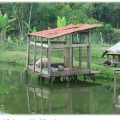
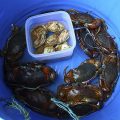


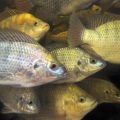
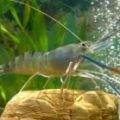

Hi tilapia people,
I have a waterhole that I was digging for a well by hand in mainly clay (terra cotter type). After two years I reckoned I may die down the hole and hired an excavator and he made a hole 21 feet deep and 18 feet across roughly in one day, ha ha.
All the water I need but it has clay in solution making it cloudy. My horse and other animals , goats, chickens drink it no problems.
I want to dig another water hole , perhaps 3 feet deep and 10 feet long and 4 or 5 feet wide near my water hole. I would fill the fish tank with the same water. Would the clay in the water harm the tilapia? I live in Western queensland, australia and it can frost in winter and up to 40 c in summer.
Any advice or comments appreciated, Chris. Vaya con Dios.
Hello, my name is Vic. I live in Ozamiz City. Tomorrow, August 13, 2020, I will start the concrete construction of my backyard tilapia pond. Since I am not yet in this undertaking before, may I ask some of your insights? The size of the pond is 12 feet by 17 feet with the depth of about 3 feet.I have a natural spring beside the pond. Excited to hear you soon. Thanks.